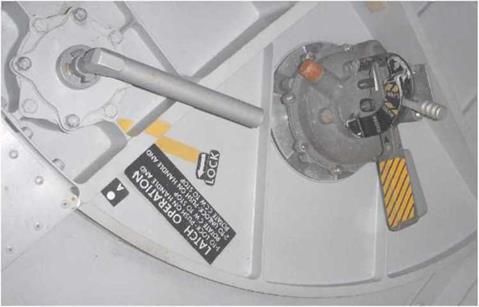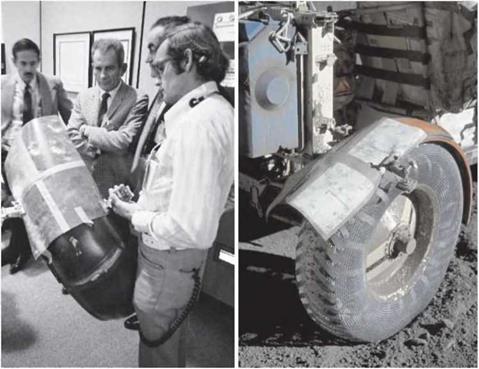On the day after TEI. the J-mission command module pilots took centre stage. The SIM bay cameras used long lengths of photographic film stored in large cylindrical magazines. These were still in the service module and that would be discarded in a few days time to burn up and be destroyed in Earth s atmosphere. The film therefore had to be brought into the command module’s cabin, the only part of the spacecraft that would survive re-entry. To bring it in, the CMP had to perform a spacewalk.
Extravehicular activity (EVA) is the name NASA gave to what everyone else calls walking in space, or on the Moon. At the time of Apollo, it specifically referred to time spent in a spaccsuil when the air pressure outside the suit could no longer sustain life. It was another of those essential techniques for Apollo that NASA had learned during the Gemini programme.
Edward White, on Gemini 4, was the first NASA astronaut to leave his spacecraft. Part of his brief was political: America wanted their spacewalking astronaut to stay out longer than Alexei Leonov had done for the Soviets a few months earlier. White floated on the end of his umbilical and gingerly tried various techniques for moving around outside a spacecraft. Apart from some exertion while getting back into the cramped cockpit, White made EVA appear easy.
When Eugene Cernan attempted to don a jet-powered back pack on Gemini 9. he was the first to attempt to do substantial work during EVA. Cernan quickly found how difficult it w as to maintain control of body position in a completely Newtonian environment. The slightest twist, turn or push against the spacecraft would send his mass flailing away from where he wanted to go. Soon, the stress of his exertions began to take a toll on him, and because the suit could not cope with the heat he was generating, his visor began to fog up on the inside. When he was exhausted, he was called back by his commander, Tom Stafford. Almost unable to see through his visor, he drew7 himself hand over hand along his umbilical back to the hatch. Reentering the cabin proved to be even more terrifying, as the two crewmen, their suits stiff with the air pressure within, battled to get Cernan far enough down into his seat to be able to shut the hatch over his head.
In the light of wrhat could have been a horrifying incident. NASA began to treat EVA very seriously indeed. During the final three flights of the Gemini programme. Mike Collins. Dick Gordon and Buzz Aldrin refined the techniques needed to work efficiently and safely outside a spacecraft. Handholds and foot restraints were added, a methodical approach was taken to all the movements needed for the EVA. and an underwater training facility was developed to simulate weightlessness.
Eor all the experience that was gained on Gemini, little actual EVA time was logged during the Apollo Moon programme in terms of a crewman floating outside the hatch of a weightless spacecraft. A lot of outside activity wxts logged on the Moon, but this was in a one-sixth g environment that the crews found very pleasant. During the Earth orbit operations on Apollo 9. David Scott and Rusty Schweickarl made tentative forays out of their CM and LM respectively: Scott just putting his head and shoulders out of the CM hatch while Schweickart egressed fully and placed his feet in so-called ‘golden slipper’ foot restraints on the LM’s porch for a test of the life-support back pack that the crews were to use on the Moon.
From Apollos 10 to 14 no crewman left the CM hatch for an EVA, although all crews trained for the possibility that, in the event of a docking problem, they might have to transfer from the LM to the CM via an EVA through the side hatches of both vehicles. When spacewalking finally returned to Apollo on the last three missions, it was something special. When Alfred Worden, Ken Mattingly and Ron Evans w-ent to retrieve film magazines from the SIM bay they became the only humans to have performed an interplanetary EVA.
Preparation for the EVA took a considerable amount of time because the spacecraft was packed with boxes of rock samples from the lunar surface. Also, three crewmen had to get suited up in the confined space of the CM, each methodically helping the other to check the integrity of his suit. Oxygen for all three men came from the spacecraft’s suit circuit with a particularly long umbilical being required to enable the CMP to get to the SIM bay. This made for a cluttered cabin with gloves and helmets floating among loops of hoses while three astronauts clambered into cumbersome spacesuits, two of which, after 20 hours of work in the dust and dirt of the lunar regolith. were extremely dirty.
The CM P carried an additional emergency supply of oxygen from a package his crewmates had brought back from the Moon. The oxygen purge system (OPS) normally sat at the Lop of a crew-man’s PLSS back pack when used on the lunar surface. Its function there was to act as a standby in case of a failure of the suit or the PLSS. If a hole were to open up in the suit or a problem were to occur with his oxygen supply, the OPS could supply oxygen from very high pressure tanks that would give the crewman extra minutes to deal with the situation. Although the back packs w ere jettisoned on the surface, the OPS were returned with the surface crew in case they had to support an EVA from the LM to the CSM. One of the OPS was transferred to the CSM to give their colleague an emergency supply during his EVA.
A television camera and a 16-mm movie camera were mounted on a pole which, once the hatch door was fully open, was inserted into a receptacle in the door so that the EVA could be filmed and Houston could watch a live view of its progress. The spacecraft’s attitude was changed so that the Sun shone obliquely across the SIM bay, but not directly into the cabin. All of the RCS thruster quads were then disabled, except for the one opposite the SIM bay so that minor rotational manoeuvres could still be carried out while the CMP was outside.
When all the crewmembers were safely sealed into their suits, the air in the cabin was expelled to space by opening a valve in the main hatch. Then, once the internal pressure in the cabin had dropped to a very low level, the hatch was opened, venting the last wisps of gas.
“Okay, Houston. The hatch is open." Cernan was now in command of his own mission, Apollo 17. and an EVA expert himself. He kept a close eye on his two rookie crewmen. Jack Schmitt and Ron Evans. Schmitt’s role on the EVA was to stand in the hatch and keep an eye on Evans, look after the umbilical and take the film magazines from him, passing them in to Cernan. Evans was going to manoeuvre himself along the side of the service module.
“Iley, there’s the Earth, right up ahead,” said Evans as he positioned himself in the hatch. “The crescent Earth.”
“Okay, Ron. You’ve got a Go for egress.” informed Cernan.
“Beautiful," replied Evans.
“Okay, and just take it slow," said Cernan. speaking from experience.
The door shielded the hatchway from the Sun. “Man. that Sun is bright," said Evans as he cleared the door. He was wearing a lunar extravehicular visor assembly (LEVA) that had been worn by one of his colleagues on the Moon and brought with them in the ascent stage.
“Pull down that visor, Ron. You’re going to need it,” advised Cernan.
“Yes.” " "
“You’re a long way from home. We don’t want to lose you.’’
The LEVA went over the crewman’s clear helmet to provide additional protection from the light and heat of the Sun. and as an extra shield against micrometeorites. It included two visors that could be pulled down if needed. The inner visor was clear for additional ultraviolet blocking. The outer visor was coated with an extremely thin layer of gold to reject both light and heat. This gold visor has become part of the astronaut’s iconography, being seen in all the most famous images showing a man on the Moon.
On Apollo 16. it was Ken Mattingly who made the EVA to the SIM bay. "Okay. How about if I get rid of the jett bag first?” One of the first tasks was to throw out the trash. All the disposable items they could find were packed into one bag that was jettisoned by gently pushing it into deep space, probably to enter Earth’s atmosphere and burn up a few days later.
“Bye-bye, bag. Okay. Okay, I’ll go out and get the TV.”
As Mattingly squinted in the Sun, he reminded Charlie Duke to bring down his visor too. “Ooh! Charlie, you’ll need the outer visor as soon as you get into the hatch.”
Mattingly manhandled the coils of his umbilical out of the hatch then put the camera pole into its receptacle in the door. He then worked his way along the handles, hand over hand, to the SIM bay, inspecting the side of the service module as he went. Training had shown that the best way to reach the bay was to move along the service module until hovering above the instruments, then use the handholds around the bay to get into the correct position to engage the feet in a restraint. Once there. Mattingly glanced towards where the spacecraf t was pointed and caught sight of the Moon with most of its disk illuminated by the Sun.
“Oh, man. Man, the old Moon’s out there. Okay, going after the pan camera. Okay, here comes the hard cover – gone.’’ He threw the outer metallic cover of the camera cassette away, then removed the soft, inner cover that was held on by Velcro and discarded this too. "Soft cover has gone. Okay. I’m going after the hook.’’ He attached a tether to the magazine as the Sun beat down from his right making him glad he was wearing Young’s LEVA. “Boy. that old visor of yours that outer visor on the glare shield really comes in handy.’’
|
Diagram of the manoeuvres the CMP had to make to reach the SIM bay. (NASA)
|
Mattingly continued to remove the giant cassette. "The pip-pin is out, and I’m throwing it away. Okay, get my feet out. There’s one. There’s two. Okay.” As soon as his feet came free, he involuntarily rotated as if he were doing a handstand on the spacecraft and had to pull himself back in with his hands. With the magazine tethered to his wrist, he manoeuvred across the module towards Duke in the hatch and passed the heavy object across for Duke to send through to Young inside. Mattingly had another job to do while outside. He was to expose an array of test chambers containing microbes directly at the Sun for 10 minutes. This was an ultimately inconclusive experiment to determine the effect of the space environment on microbial growth.
As Mattingly sat astride the service module with his back to the hatch, Duke caught sight of Mattingly’s wedding ring tumbling in the strong sunlight. It had been lost earlier in the flight and they had been unable to find it among the cabin’s many nooks and crannies. By the time he thought to retrieve the ring, it had floated out of his reach and on into the void of space. Duke thought it a shame the ring would be lost forever but elected to say nothing of it to his crewmates because they had other things to concentrate on in this hostile environment. Yet of all the directions the ring could have taken away from the command module, Duke was astounded to see that it was headed directly for the back of Mattingly’s head. He then watched in fascination as it bounced off the LEVA and began a perfect Newtonian path back towards the hatch. Duke was not to be foiled a second time. As soon as the ring came within range, he carefully grasped it.
"Guess what I caught floating out the hatch?” said Duke, gleefully, if somewhat misleadingly.
"What’s that?” asked Mattingly.
|
Ron Evans returning along the side of the Apollo 17 SM with the cassette from the
mapping camera in tow. (NASA)
|
“A ring.”
“Oh, is that right?”
“Yeah. I think it’s yours,” laughed Duke. “In fact, it had already gone out and hit you and was coming back when I caught it.”
“Boy, how’s that for luck?” laughed Mattingly
When Ron Evans got his opportunity to go outside his CSM America and retrieve the film cassettes, no one could have been happier about it than he was. Throughout his EVA, he hummed and chatted with a boyish delight. Working away outside the spacecraft, he waved at the camera.
“We see you waving,” informed Houston.
“Hey, this is great!” said Evans, his voice up an octave in the joy of being outside of the cramped cabin where he had been for over 10 days. “Talk about being a spaceman? This is it!”
Evans took a look at the damage that the SM skin had sustained during the flight. "Okay. Beautiful! Hey. the paint on here – it’s a silver paint and it’s just got little blisters on it. You just kind of peel it off with your fingers." Then he described his position between the two worlds. "I can see the Moon back behind me! Beautiful! The Moon is down there to the right – full Moon. And off to the left, just outside the hatch down here, is a crescent Earth." He noticed how the atmosphere scattered the sunlight towards the night side, extending the crescent. “But the crescent Earth is not like a crescent Moon. It’s got kind of like horns, and the horns go all the way around, and it makes almost three-quarters of a circle.”
Having manoeuvred into the correct position, he tried to settle into the golden slippers. “Okay, I’m having a little trouble, right now. just torquing down to get my foot in the foot restraint, for some reason. Okay, the right one s in. And the left one’s in. Hey, pretty stable right here. Let go of both hands? See?"
Happy as he could be. he went after the radio sounder’s cassette. “Okay, let’s try the old cassette. We’ll push down on it until it goes past centre. Ah-ha! I think that was more than [the expected] two pounds of force to come out. but it came out. And I’ve got the film.”
He brought the cassette to Schmitt and then returned for the panoramic camera’s film, all the time revelling in the experience.
“Houston, this is – Let’s see. when you’re EVA, they use your name, don’t they?” He wasn’t simply T7′ now.
“Ok ay, Ron,” humoured Houston. “Yes, sir, we’ll use it, Ron.”
“Houston, this is Ron. okay?” announced a gleeful Evans. “You hear me okay, I guess, huh?”
“Roger. Ron,” replied Houston. “Read you loud and clear.”
“Okay,” laughed Evans. “Oh. this is great. I’ll tell you!”
“Yes, we thought it was Mr. America.” With a pun on the name of the CSM, Houston was gently mocking him, but in his happiness he took it in good heart.
“Well, it is. Something like that. Oh, boy! Beautiful Moon! Full Moon down there. 1 can see the engine bell sitting back here. That’s a pretty good-si/ed thing, Loo. And, of course, the VHF antenna is still sticking out there.”
Evans held up the panoramic camera’s thermal cover for Houston to see. “Can you see that? The thing I’m holding up. It’s the cover that’s on the outside of the pan camera. It’s a thermal cover, see. that covers up the cassette.”
“Roger. Yes, we see it. Ron," confirmed Houston.
“Whooooee!" laughed Evans as he tossed the cover past the camera’s field of view.
Houston noticed. “We just saw’ that cover.”
Humming away to himself, Evans attached the magazine to his wnist and pulled it free. "Out she comes. Nice and easy. This is a heavy son of a gun. Not heavy up here; it just has a lot of momentum to it. Once she starts pulling in one direction, it just takes a lot of force to stop it.”
As he hand-walked his way along the handholds, he noted how the heavy object moved. “Hey. it’s just kind of coming along with me. I’ll just let her do that. Hey, she’s just floating there. Thai’s good. Nice and slow, because you don’t want that
thing banging around too much up there, I don’t think. That’s the way it ought to be done, isn’t it?”
Evans passed the cassette to his colleagues and returned to the SIM bay for the mapping camera cassette. As he did, he found that he was becoming used to the mechanics of getting around in space, and decided to go back down to the SIM bay by aiming his feet directly for the restraint. "You know, I’ll just go backwards down there.” He hummed away to himself as he shimmied down the spacecraft.
"That’s an unorthodox way to enter the SIM bay, but it works. Once you get your feet in there, you almost feel like maybe they might come out, you know,” he laughed. "So I’m not sure you really trust them. The right foot’s in good and tight. Hello, Mom!”
"We see you, Ron. Looking great,” called Houston. The MOCR were enjoying the show too.
Evans then called to his children. "Hello, Jan. Hi, Jon. How are you doing? Hi, Jaime. Let’s see, I’m supposed to rest, though, aren’t I? What would you like to know about the SIM bay? Looks great.”
When compared to the light-hearted and longer EVAs by Mattingly and Evans on the later flights, A1 Worden’s foray to the SIM bay on Apollo 15 was a fast, efficient
affair where, although he enjoyed the experience, he wasted little time on the view. However, as he started to bring the mapping camera’s cassette towards the command module, he paused to look at Irwin standing in the hatch: "Jim, you look absolutely fantastic against that Moon back there. That is really a most unbelievable, remarkable thing.” Worden had no camera with him to record this unique interplanetary view, but after they returned to Earth, artist Pierre Mion carefully reproduced the scene in a painting.
When Worden had finished off by making an examination of the SIM bay on Houston’s behalf, he and Irwin got back into the cabin, took the camera pole with them and closed the hatch. As they waited for Endeavour’s cabin to repressurise, Scott remarked how quickly Worden had undertaken the EVA. "You should have stayed longer.” Perhaps Scott Pierre Mion’s recreation of A1 Worden’s view was aware of how much time he had towards Jim Irwin and the Moon. spent outside on the Moon’s surface,
and here was his colleague’s chance to feel the exhilaration of spacewalking, yet he spent less than half an hour outside. Bui Worden, like so many crewmembers, brought an entirely businesslike attitude to his work. On one level, it would have been nice to have got the job done then spend a little time just enjoying the view’ and the experience. On the other hand, he w-as in a situation that had many possibilities for danger, where a technical problem could quickly develop into a lile-threatening scenario.
The cabin was repressurised from a rapid repressurisation system consisting of three small oxygen tanks that had been topped up prior to the EVA. These w’ere now’ emptied into the spacecraft. Also, the oxygen from the OPS tank was bled out to add to the pressure. The next time the door was opened, the command module would be silling on the waters of the Pacific Ocean.











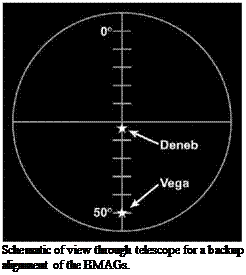 Fortunately, no IMU ever failed in flight and this procedure was never used.
Fortunately, no IMU ever failed in flight and this procedure was never used.
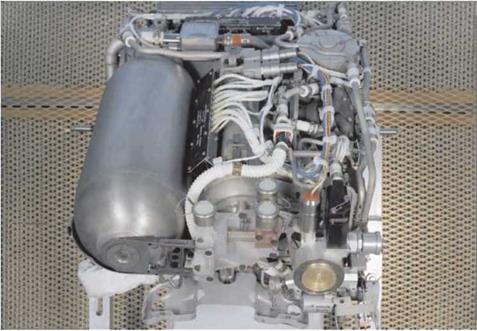
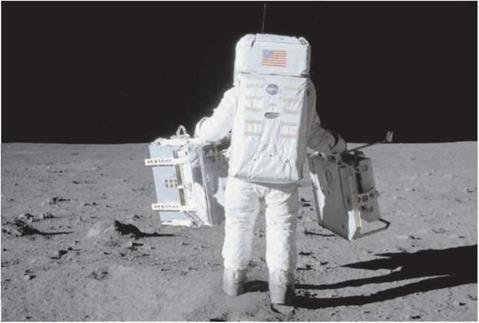

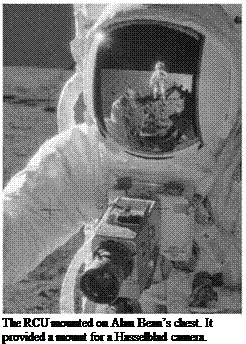 The checklists the crews used were very thorough. Every connection and every switch position was detailed for the men to check, and the procedures were practised repeatedly before the mission. The problem for the Apollo 12 crew was that they had done this so many times that they thought they knew it. More importantly, they were used to their training hardware. A1 Bean explained: ‘’The gear used down at the Cape [for training] have the comm switches on them but you don’t have to use them at all for comm.” Hence they did not have to actually operate the switch during training, as Conrad pointed out, “fn training, we always just read it in the checklist and kept on going.”
The checklists the crews used were very thorough. Every connection and every switch position was detailed for the men to check, and the procedures were practised repeatedly before the mission. The problem for the Apollo 12 crew was that they had done this so many times that they thought they knew it. More importantly, they were used to their training hardware. A1 Bean explained: ‘’The gear used down at the Cape [for training] have the comm switches on them but you don’t have to use them at all for comm.” Hence they did not have to actually operate the switch during training, as Conrad pointed out, “fn training, we always just read it in the checklist and kept on going.” Lost air
Lost air